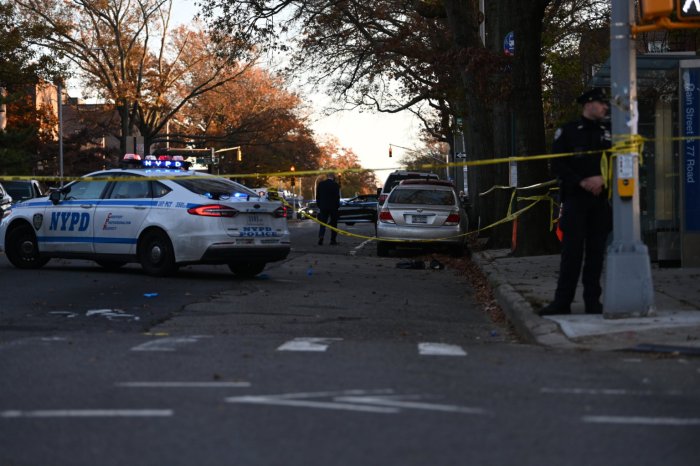By Kathianne Boniello
The faces lining the walls of the Bayside Historical Society exhibit room are etched with age but most are smiling. All are black and have a story to share.
In its upcoming exhibit, “Bayside was a Wilderness Then: Voices from Bayside’s Black Community Revisited,” the Bayside Historical Society tells those stories with old photographs, newspaper clippings and recorded interviews that chronicle an older, simpler Bayside.
“We had the wood stove and the window icebox where you would buy the ice from the iceman in the wagon,” remembered Ann Wooden Delk, 77. “We would run out there and get that, and we had the fishman.”
Ethel Smith Baker, 88, who has lived in Bayside since 1937, said simply: “I live the life that I love and I love the life that I live.”
Organized by the Bayside Historical Society’s Black History Committee, the exhibit includes a booklet with complete interviews with each of the 12 subjects chosen by the committee, photos and 10-minute voice recordings of each interview subject. The exhibit is slated to open Saturday, Feb. 16, at the Officer’s Club at Fort Totten.
Committee member Loretta Napier, whose own family has been in Bayside for more than 100 years, said “we want the newcomers to know what this community was built on. We want to show our beginnings and the fact that we are still strongly here.”
Though the exhibit focuses on Bayside, the interviews reveal strong ties to other northeast Queens communities, committee members said. Many of the people interviewed had lived in Flushing or attended school there, while still others worked in Douglaston and Little Neck when not spending their time roaming the farms and fields of Bayside.
“When we came here in 1934, they were covering the trolley tracks that ran from Flushing to Bayside,” William H. McKenzie said.
This year’s project was based on a similar Bayside Historical Society exhibit in 1988 which centered on the stories of six longtime Baysiders and the construction and development of the Community Baptist Church in 1948.
Two of those originally interviewed, Baker and Joylette Wilson, were included in the 2002 project as well.
Rose Marie Ryan-Harrison, also a committee member with deep roots in the area, said the interviews reveal how tight-knit the black neighborhood centered in southern Bayside was back in the first half of the last century and still is today.
“Everybody knew one another,” Ryan-Harrison said. “It’s really been a cohesive community.”
The interviews in the 2002 project also spotlight racism in Bayside.
Grace Goldsborough, 76, went to Bayside High School.
“They never gave the blacks an academic diploma,” she said. “I received a general diploma even though I was a B-plus student. They didn’t want you to get ahead … now I look back upon it. It hurts me, because I could have gone to college — free!”
The exhibit, which is expected to be open for 1 1/2 years, will open Feb. 16, from noon to 4 p.m. in Building #208 at Fort Totten. Because of security, those wishing to attend must call ahead and reserve a space: 352-1548.
Reach reporter Kathianne Boniello by e-mail at Timesledgr@aol.com or call 229-0300, Ext. 146.





























